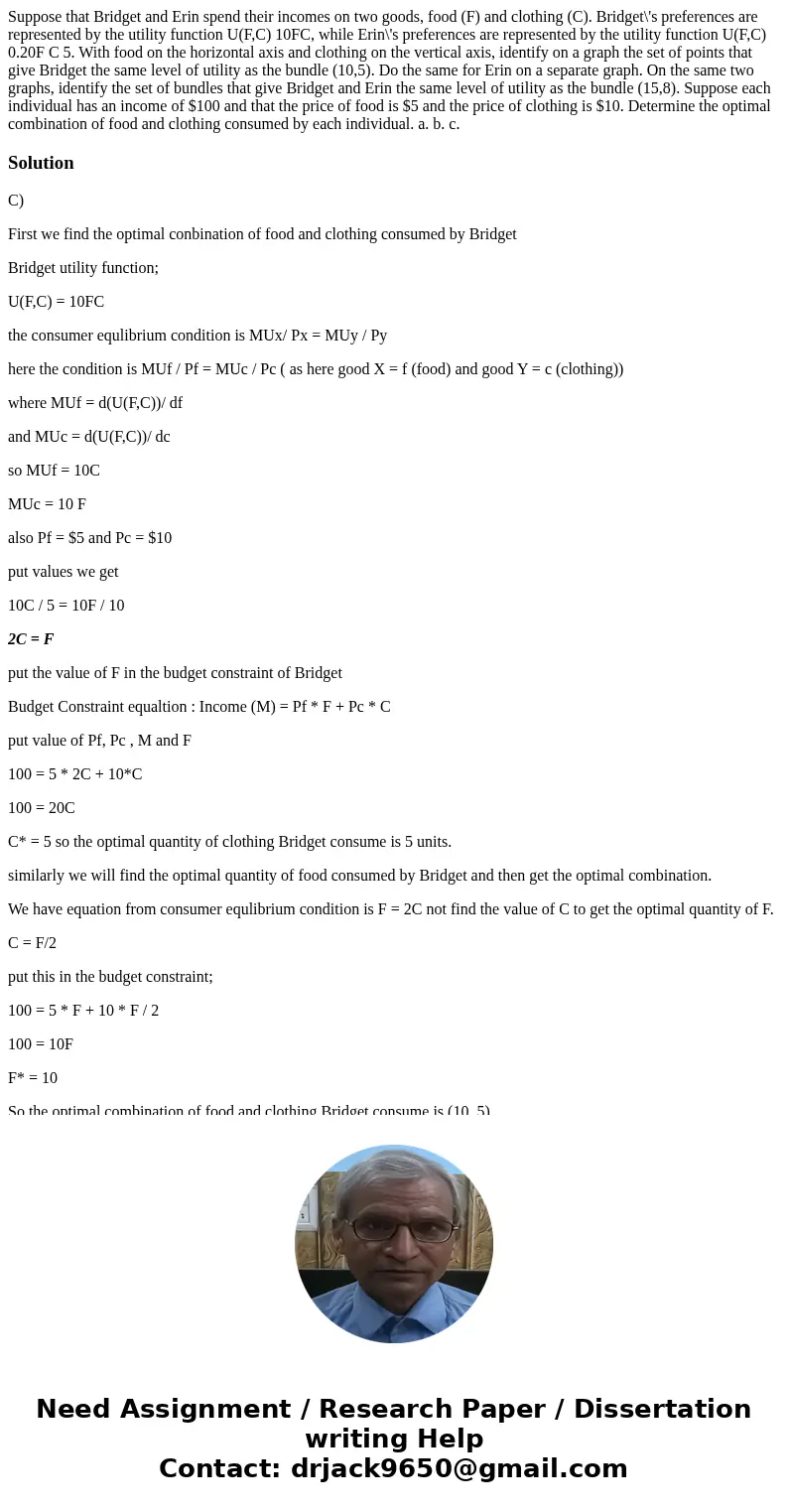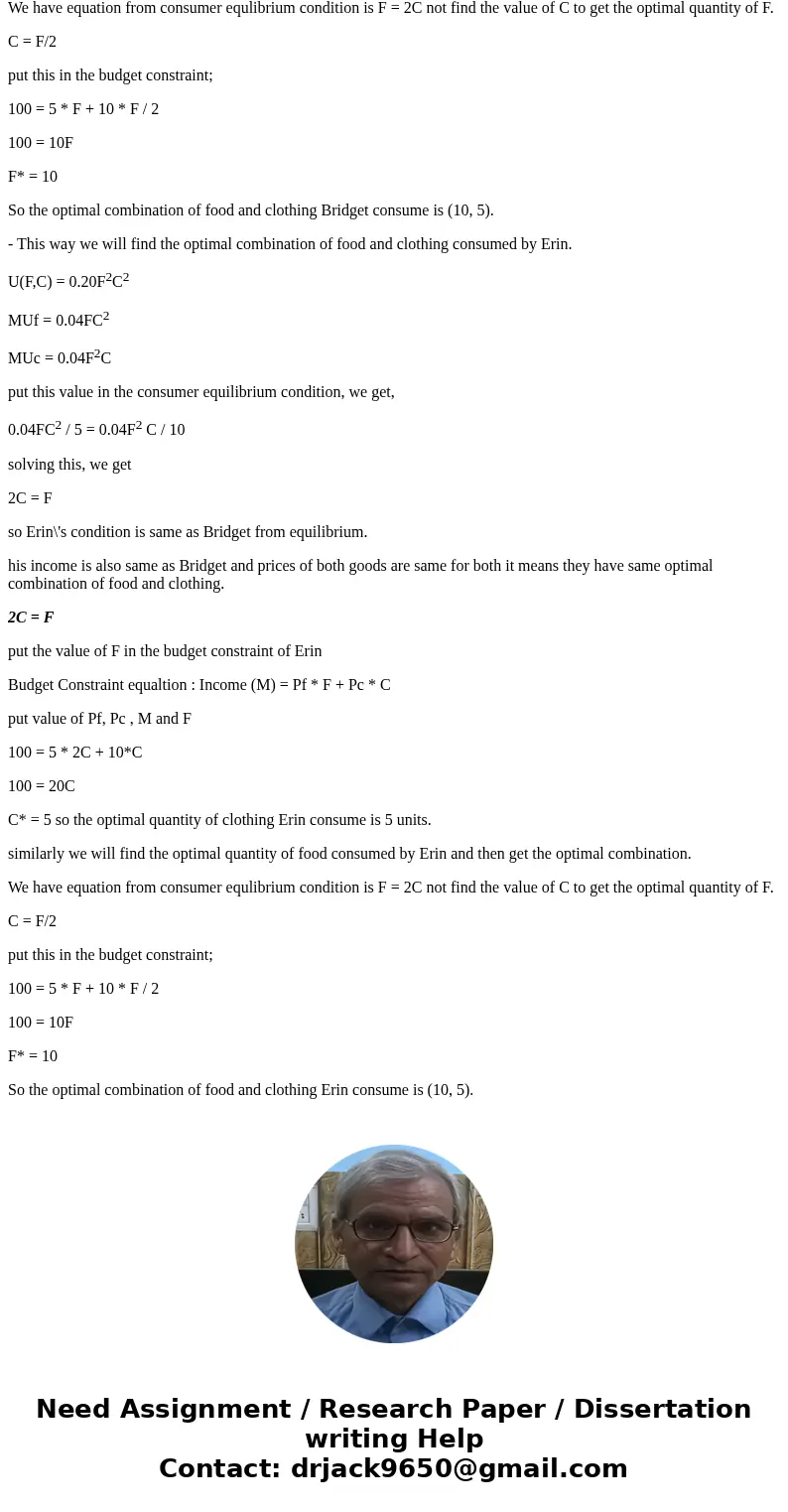Suppose that Bridget and Erin spend their incomes on two goo
Solution
C)
First we find the optimal conbination of food and clothing consumed by Bridget
Bridget utility function;
U(F,C) = 10FC
the consumer equlibrium condition is MUx/ Px = MUy / Py
here the condition is MUf / Pf = MUc / Pc ( as here good X = f (food) and good Y = c (clothing))
where MUf = d(U(F,C))/ df
and MUc = d(U(F,C))/ dc
so MUf = 10C
MUc = 10 F
also Pf = $5 and Pc = $10
put values we get
10C / 5 = 10F / 10
2C = F
put the value of F in the budget constraint of Bridget
Budget Constraint equaltion : Income (M) = Pf * F + Pc * C
put value of Pf, Pc , M and F
100 = 5 * 2C + 10*C
100 = 20C
C* = 5 so the optimal quantity of clothing Bridget consume is 5 units.
similarly we will find the optimal quantity of food consumed by Bridget and then get the optimal combination.
We have equation from consumer equlibrium condition is F = 2C not find the value of C to get the optimal quantity of F.
C = F/2
put this in the budget constraint;
100 = 5 * F + 10 * F / 2
100 = 10F
F* = 10
So the optimal combination of food and clothing Bridget consume is (10, 5).
- This way we will find the optimal combination of food and clothing consumed by Erin.
U(F,C) = 0.20F2C2
MUf = 0.04FC2
MUc = 0.04F2C
put this value in the consumer equilibrium condition, we get,
0.04FC2 / 5 = 0.04F2 C / 10
solving this, we get
2C = F
so Erin\'s condition is same as Bridget from equilibrium.
his income is also same as Bridget and prices of both goods are same for both it means they have same optimal combination of food and clothing.
2C = F
put the value of F in the budget constraint of Erin
Budget Constraint equaltion : Income (M) = Pf * F + Pc * C
put value of Pf, Pc , M and F
100 = 5 * 2C + 10*C
100 = 20C
C* = 5 so the optimal quantity of clothing Erin consume is 5 units.
similarly we will find the optimal quantity of food consumed by Erin and then get the optimal combination.
We have equation from consumer equlibrium condition is F = 2C not find the value of C to get the optimal quantity of F.
C = F/2
put this in the budget constraint;
100 = 5 * F + 10 * F / 2
100 = 10F
F* = 10
So the optimal combination of food and clothing Erin consume is (10, 5).


 Homework Sourse
Homework Sourse